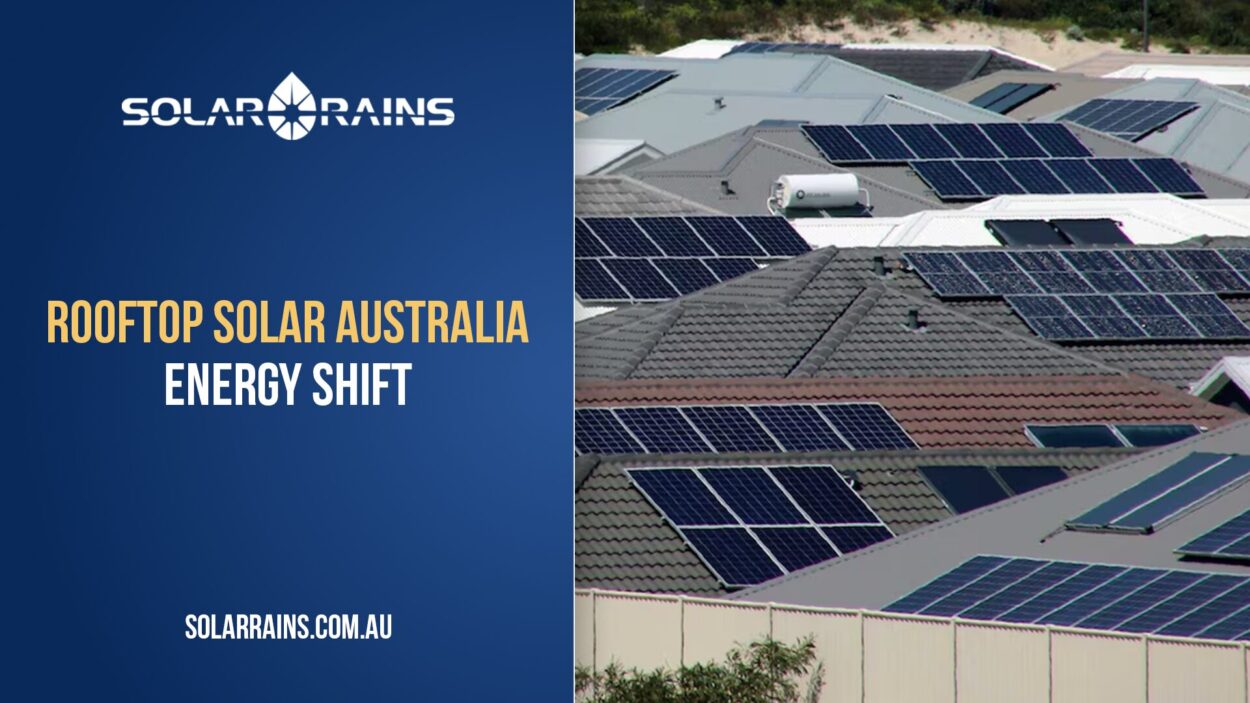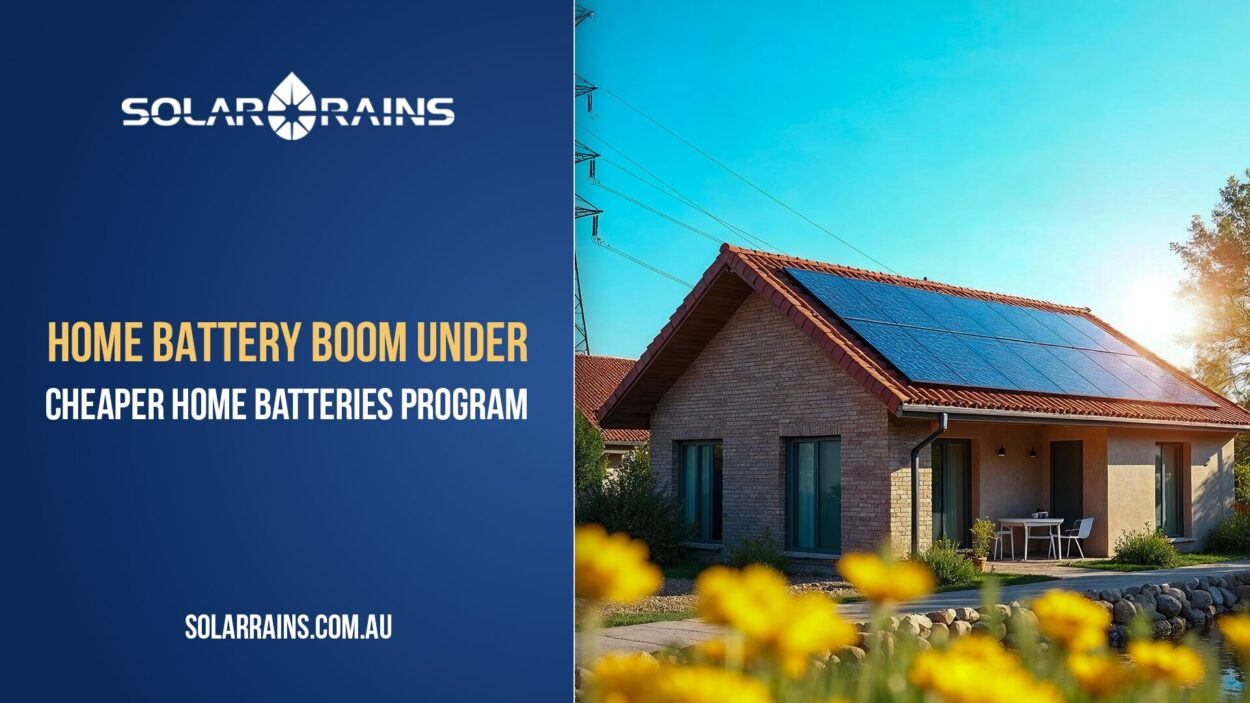As Australia accelerates its transition to renewable energy, it faces a delicate balancing act known as the energy trilemma: achieving reliability, affordability, and sustainability – all at once. While solar energy is now widespread across rooftops and utility-scale sites, the growing role of solar battery systems has become central in navigating this challenge.
At Solar Rains, we believe that innovation in solar battery solutions and advanced analytics can empower energy providers, households, and businesses to take control of their power usage and ensure grid resilience. In this article, we explore how solar batteries are helping to solve Australia’s energy trilemma, the role of advanced technologies, and what lies ahead.
Understanding the Energy Trilemma
Australia’s energy trilemma mirrors what many developed nations face: the need to deliver cleaner energy without sacrificing grid reliability or raising electricity prices. The three sides of the trilemma are:
- Reliability: Ensuring stable power supply amid rising demand and extreme weather.
- Affordability: Making energy costs manageable for households and businesses.
- Sustainability: Meeting decarbonisation targets by shifting to renewables.
As the grid evolves under the pressure of distributed energy resources (DERs) such as rooftop solar, electric vehicles, and battery storage, striking the right balance has become more complex.
The Role of Solar Battery Technology
A solar battery stores excess energy generated by solar panels and releases it when needed, typically at night or during peak demand periods. Its role in the energy trilemma is threefold:
- Improved Reliability: Solar batteries provide backup during outages and reduce the grid load.
- Lower Bills: Time-of-use optimisation reduces reliance on high-cost grid power.
- Cleaner Energy: They help maximise the use of renewable power, reducing emissions.
In high-penetration solar areas like Victoria and Queensland, batteries also help manage voltage stability and load balancing.
Grid Resilience Under Pressure
Increased electrification spurred by electric vehicles, data centres, and AI infrastructure—is placing unprecedented stress on Australia’s power grid. According to recent discussions at Australia Energy Week, one key concern is network reliability in the face of extreme weather and changing consumption patterns.
Solar battery systems, particularly when paired with advanced analytics, give utilities and consumers tools to manage loads dynamically, detect faults early, and ensure continuity even in adverse conditions.
For instance, predictive battery management software can monitor temperature, capacity fade, and state-of-charge to anticipate failures before they disrupt supply.
Managing a Changing Grid with Solar Storage
Australia’s rooftop solar penetration is among the highest globally. While this provides abundant clean energy, it also creates grid management challenges due to the variability of generation and load.
In areas where solar power suppliers deploy high numbers of rooftop systems without storage, excess midday production can destabilise voltage, and sudden drop-offs can trigger outages.
By adding solar battery storage, consumers and network operators gain:
- Peak shaving & load shifting capabilities
- Power factor correction
- Frequency response support
Real-time monitoring and analytics further enhance system performance, helping determine optimal charge/discharge times based on weather forecasts, load patterns, and market prices.
Unlocking Value with Data & Decentralisation
Australia’s electricity infrastructure is already aging. Over 80% of the transformers, cables, and overhead lines projected for 2050 are already in place today. Making them work harder and smarter is vital.
Through IoT-enabled solar products, solar batteries can share real-time operational data with utilities and consumers alike. This opens doors to:
- Faster fault detection and resolution
- Smarter investment planning
- Enhanced demand forecasting
Moreover, with the Australian Energy Regulator (AER) focusing on cost-efficient asset management, battery technology and solar product wholesale pricing are becoming increasingly attractive.
Case Study: What the UK & Germany Show Us
Australia isn’t alone in this transition. Countries like the UK and Germany have already adopted advanced grid technologies, including low-voltage sensors and real-time analytics, to maximise grid flexibility.
In the UK, predictive analytics and decentralised batteries have helped reduce power bills and increase grid uptime. These technologies, now proven, are highly adaptable to Australia’s market, particularly in rural and remote zones where solar battery systems are a lifeline during blackouts.
Why Solar Battery Is Key for Both Homes & Utilities
The affordability side of the trilemma is especially relevant for Australian households, many of whom have installed rooftop solar systems. However, without a battery, excess energy is exported to the grid at a low feed-in tariff and bought back later at higher retail rates.
Solar batteries change this equation by:
- Letting consumers use more of their own solar
- Supporting grid resilience by reducing peak demand
- Allowing energy arbitrage, buying low, using high
For utilities, batteries offer grid support services like:
- Voltage regulation
- Spinning reserve
- Black start capabilities
This is why solar suppliers increasingly offer bundled packages with solar + battery + monitoring in one solution.
Policy Backing & Investment Trends
Government initiatives are also driving adoption of solar batteries in Australia. For example:
- The Small-scale Renewable Energy Scheme (SRES) is being extended to support battery integration.
- States like Victoria are running Neighbourhood Battery Programs to fund localised storage.
- The NSW Peak Demand Reduction Scheme now includes incentives for battery installation.
These programs lower upfront costs and make solar battery systems more accessible to families and small businesses.
Overcoming the Final Barrier: Education & Trust
Despite falling costs and rising performance, solar battery adoption still faces hurdles around consumer confidence and complexity. Education is key.
Trusted solar suppliers like Solar Rains play a critical role by:
- Providing clear ROI comparisons
- Offering professional system design & support
- Maintaining transparency in solar product wholesale pricing
By focusing on long-term customer outcomes, brands can drive broader trust and accelerate Australia’s energy goals.
FAQs: Solar Battery in the Energy Trilemma
It stores surplus solar energy and releases it during peak demand or outages, reducing pressure on the grid.
Yes, especially in areas with high electricity prices or frequent blackouts. With rebates, the payback time is increasingly favourable.
They reduce fossil-fuel dependence by enabling round-the-clock use of solar power, helping cut emissions.
Residential batteries are typically <15kWh, while utility-scale systems range from hundreds of kWh to multi-megawatt-hours. Both support different layers of grid resilience.
At Solar Rains, we offer a curated range of solar battery systems from trusted manufacturers, available with professional advice and installation support.
Conclusion: Building a Smarter, Greener, and Stronger Grid
Solving Australia’s energy trilemma won’t happen overnight. But through the strategic use of solar battery technology, alongside real-time analytics and policy support, the path becomes clearer.
By embracing data-driven grid planning, incentivising distributed storage, and expanding consumer access to reliable battery systems, Australia can build an energy future that is affordable, sustainable, and resilient.










